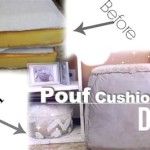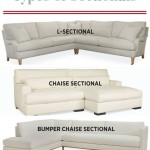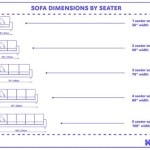Antique Wooden Sofa Table: A Timeless Addition to Interior Design
The antique wooden sofa table stands as a testament to enduring craftsmanship and design. More than just a functional piece of furniture, it represents a link to the past, reflecting the aesthetics and societal values of its era. Understanding the history, construction, and variations of these tables allows informed choices when acquiring or appreciating them. Often overlooked in contemporary interiors, the antique wooden sofa table brings a unique character and elegance to any space.
A sofa table, traditionally placed behind a sofa or against a wall, provides both a surface for lamps, books, and decorative objects, and also often includes drawers or shelves for storage. Its design often complements the sofa and the overall room décor. Antique wooden versions of these tables add a layer of historical depth due to the materials and techniques used in their creation, as well as their provenance. Each imperfection and sign of wear contributes to the table's story and appeal.
The value of an antique wooden sofa table is determined by several factors. These include its age, the type of wood used, the quality of craftsmanship, its condition, its provenance (history of ownership), and its rarity. Tables crafted from exotic woods or featuring intricate carvings command higher prices. A well-preserved piece, or one that has been professionally restored, will typically be more valuable than a damaged or poorly maintained one. The era in which the table was made also plays a crucial role in determining its worth, with certain periods being more sought after by collectors.
Key Features and Characteristics
Antique wooden sofa tables aren’t all created equal: distinct characteristics define them. The wood, joinery, stylistic influences, and hardware of an antique table all contribute to its identity and value. Recognizing these features is crucial for identifying, appreciating, and evaluating these pieces.
The type of wood used is a primary indicator of the table's quality and origin. Common choices include mahogany, walnut, oak, and cherry. Mahogany, often imported from the Americas, was a popular choice in the 18th and 19th centuries for its rich color and workability. Walnut, with its distinctive grain and durability, was another prized wood, especially in the Queen Anne and William and Mary periods. Oak, a strong and readily available wood, was frequently used in earlier pieces, particularly those with a more rustic or country aesthetic. Cherry, known for its smooth texture and warm tones, was favored for its ability to take a fine polish. The presence of rare or exotic woods can significantly increase the table's value.
Joinery refers to the methods used to connect the various wooden components of the table. Traditional joinery techniques, such as dovetails, mortise and tenon joints, and tongue-and-groove construction, are signs of skilled craftsmanship. Dovetail joints, characterized by interlocking wedge-shaped pieces, are particularly strong and indicate high-quality construction. Mortise and tenon joints, where a projecting tenon is inserted into a corresponding mortise (hole), provide a robust and durable connection. The precision and tightness of these joints are indicators of the maker's skill and the overall quality of the table. The absence of these traditional joinery techniques or evidence of sloppy workmanship may suggest a later reproduction or a lower-quality piece.
Stylistic influences reflect the prevailing design trends of the period in which the table was made. These influences are evident in the table's shape, ornamentation, and overall aesthetic. Common styles include Queen Anne, Chippendale, Hepplewhite, Sheraton, and Victorian. Queen Anne tables, popular in the early 18th century, often feature cabriole legs, pad feet, and a graceful, curved silhouette. Chippendale tables, named after the renowned furniture maker Thomas Chippendale, are characterized by elaborate carvings, ball-and-claw feet, and a variety of leg styles. Hepplewhite tables, popular in the late 18th century, are known for their delicate proportions, tapered legs, and oval or shield-shaped backs. Sheraton tables, also from the late 18th century, feature clean lines, rectangular shapes, and inlaid decoration. Victorian tables, popular in the 19th century, are often heavily ornamented with carvings, moldings, and turned legs. Recognizing these stylistic influences helps to determine the table's age and origin.
Hardware, such as drawer pulls, hinges, and locks, can provide valuable clues about the table's age and origin. Original hardware is highly desirable and adds to the table's value. Common materials include brass, iron, and wood. Brass hardware was frequently used in the 18th and 19th centuries and can be identified by its color, weight, and construction. Iron hardware was more common in earlier pieces and is often hand-forged. Wooden knobs and pulls were also used, particularly in more rustic or country-style tables. The style and design of the hardware should be consistent with the table's overall aesthetic. Replacement hardware, while sometimes necessary, can detract from the table's value. Examining the hardware for signs of wear, such as patina and oxidation, can help to determine its age and originality. The presence of maker's marks or stamps on the hardware can also provide valuable information about its origin.
Common Types of Antique Wooden Sofa Tables
Several distinct types of antique wooden sofa tables have emerged over time, each reflecting specific design philosophies and functional requirements. Understanding these variations helps in identifying and appreciating their unique characteristics.
Federal style sofa tables, popular in the late 18th and early 19th centuries, reflect the neoclassical influences that swept through America following the Revolutionary War. These tables are characterized by their elegant proportions, clean lines, and refined ornamentation. Common features include tapered legs, often with inlaid decoration or reeding, and rectangular or oval tops. Veneering, using exotic woods such as mahogany and satinwood, was frequently employed to create visually appealing surfaces. The overall aesthetic is one of lightness and grace, reflecting the era's emphasis on reason and order. These tables were designed to complement the formal drawing rooms of affluent homes and were often used to display decorative objects and books.
Victorian era sofa tables, produced during the reign of Queen Victoria (1837-1901), are characterized by their elaborate ornamentation, rich materials, and a sense of opulence. These tables often feature heavily carved details, such as floral motifs, scrolls, and cabriole legs. Dark woods, such as mahogany and walnut, were commonly used, often with a high-gloss finish to accentuate the wood's grain. Marble tops were also popular, adding to the table's luxurious appearance. Victorian sofa tables were designed to be focal points in the room, reflecting the era's emphasis on display and social status. The sheer variety of decorative elements and a love for intricate details define this style.
Arts and Crafts sofa tables, emerging in the late 19th and early 20th centuries, represent a reaction against the mass production and ornamental excesses of the Victorian era. These tables are characterized by their simple, honest construction, emphasis on natural materials, and handcrafted details. Oak was the most common wood used, often finished with a stain that highlighted the wood's grain. Design elements such as exposed joinery, such as through tenons, and hammered copper hardware are typical. Functionality and durability were prioritized over elaborate decoration. The Arts and Crafts movement championed the value of handcraftsmanship and the beauty of natural materials, resulting in furniture that is both aesthetically pleasing and structurally sound.
Preservation and Restoration
Maintaining the integrity of an antique wooden sofa table requires careful preservation and, when necessary, appropriate restoration techniques. Protecting the table from damage, and correctly addressing any existing issues, ensures its longevity and value.
Proper cleaning and maintenance are essential for preserving the condition of an antique wooden sofa table. Regular dusting with a soft, lint-free cloth is crucial to prevent the accumulation of dirt and grime. Avoid using harsh chemical cleaners or abrasive materials, which can damage the finish. A gentle cleaner specifically designed for antique furniture should be used sparingly, and always tested in an inconspicuous area first. Polishing the table with a high-quality furniture polish can help to maintain its luster and protect the wood from moisture. Over-polishing, however, can lead to a buildup of residue and a dull appearance. Temperature and humidity control are also important factors. Extreme fluctuations can cause the wood to warp or crack. Maintaining a stable environment can extend the lifespan of the table.
Addressing structural issues requires careful consideration and, in some cases, professional intervention. Loose joints should be repaired using appropriate adhesives and clamps. Avoid using excessive force, which can cause further damage. Cracks and splits in the wood can be filled with wood filler or epoxy, carefully matched to the color of the surrounding wood. Missing or damaged hardware should be replaced with period-appropriate pieces. When replacing hardware, it is important to match the style, material, and finish of the original hardware as closely as possible. If the table is structurally unsound or requires extensive repairs, it is best to consult with a qualified furniture restorer. A professional restorer has the knowledge and experience to address structural issues without compromising the table's integrity. Improper repairs performed by an amateur can significantly reduce the table's value.
Refinishing an antique wooden sofa table is a delicate process that should be approached with caution. While refinishing can restore the table's appearance, it can also remove its original patina and reduce its value. Only consider refinishing if the original finish is severely damaged or deteriorated. Before refinishing, carefully assess the table's condition and consult with a professional restorer. If refinishing is necessary, use appropriate stripping agents and techniques to remove the old finish without damaging the wood. Apply a new finish that is compatible with the wood and the table's style. Avoid using modern finishes that are too glossy or artificial-looking. The goal should be to restore the table's appearance while preserving its character and history. Documenting the refinishing process can also help to maintain the table's provenance and value.

Walnut Wood Sofa Console Table Karges French Provincial Country Entry Way Furniture Vintage Tv Stand Storage Custom Paint Avail

Accent Console Sofa Table Antique Entryway Wood Vintage Display Shelf Curved Leg

Vintage Wood Console Library Sofa Table Lower Shelf Fluted Legs Raised Trim

Old World Sofa Table Art Furniture Cart

Solid Alder Wood Shaker Sofa Table With Drawers In Antique Cherry Finish Archbold Furniture Hoot Judkins

Console Table Sofa With Drawers Luxurious And Exquisite Design For Entryway Projecting Long Shelf Wood Tables Behind Couch Hallway Living Room Antique White Com

Gosalmon 58 In Antique Walnut Rectangular Solid Wood Console Table Sofa With Drawers And Long Shelf Aj522391eeh The Home Depot

Benjara 18 In L Antique White Spacious Wooden Sofa Table With Carved Turned Legs Bm183128 The Home Depot

Vintage Wood Glass Cane Console Table Sofa Couch Hallway Entryway Entry Boho Decor Modern Farmhouse Plant Holder Tv Stand Caned Shelf

International Caravan Windsor Hand Carved Walnut Stain Wood Sofa Table Com








